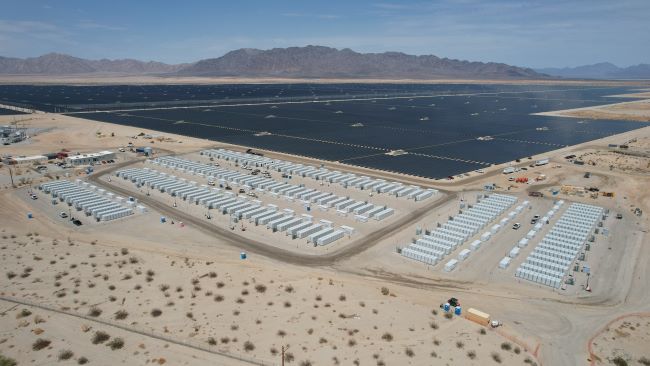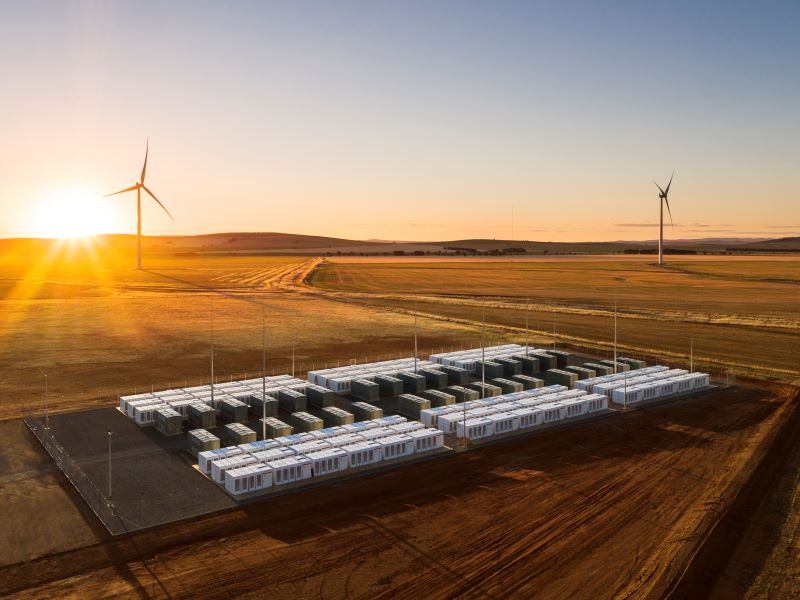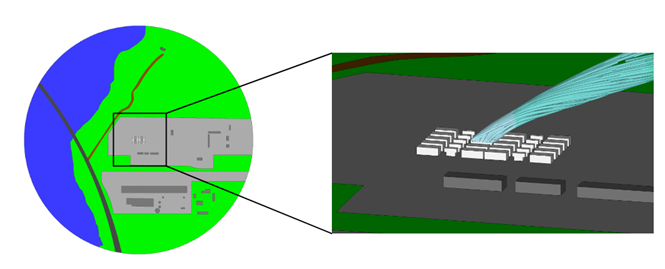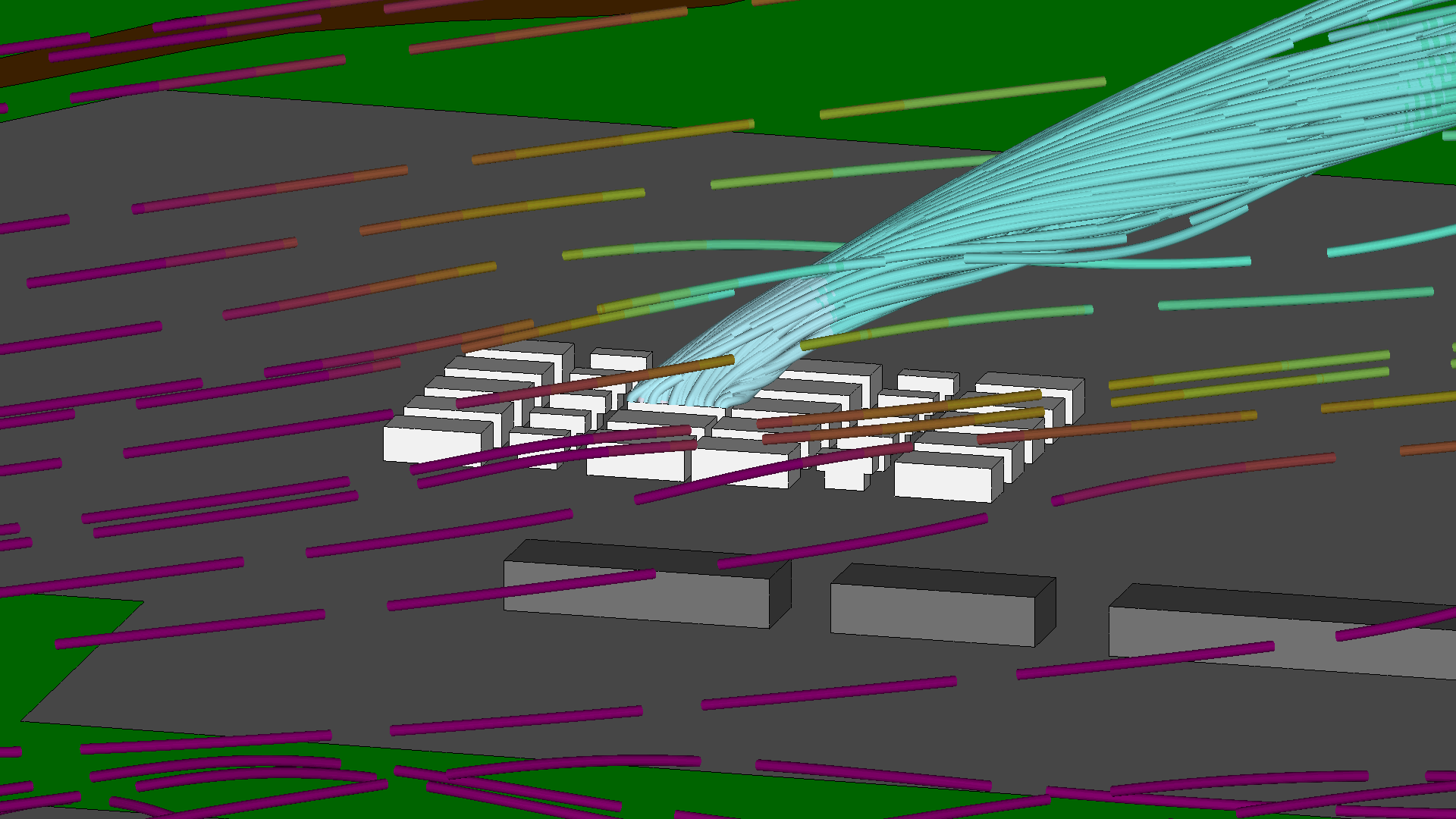Analyzing Risk in Battery Energy Storage System Fires
By Kelly Hile
Using CFD simulations to help energy site owners make critical decisions about safety and operations
As the world embarks on the renewable energy revolution, new technologies are emerging to improve solar and wind viability as a consumer utility. While the race for energy innovation continues, one star has been rising to the top – lithium-ion batteries. These rechargeable workhorses are powering us into the future with ever-increasing electrical storage capacities, typically attached to renewable power facilities.

Bureau of Land Management California, Public domain, via Wikimedia Commons

Image propriété Neoen, CC BY-SA 4.0, via Wikimedia Commons
All electric power suppliers use some form of energy storage to help with the fluctuations of supply and demand. With renewable energy sources such as solar and wind, power generation is unpredictable and highly variable. Lithium-ion batteries offer a solution. Storage houses filled with batteries can collect and store electricity for use in the grid later, regulating the supply of electricity to consumers. These Battery Energy Storage Systems, or BESS, are popping up all over the world.
The increase of BESS worldwide has come with some new environmental and safety concerns. When they are overheated, lithium-ion batteries ignite, and these are no ordinary fires. The combustion of lithium salts has some concerning byproducts, and the offgases are released into the atmosphere in the event of a battery fire. Ten separate fires have occurred in the past year alone, half of them in the United States. While the industry is making some progress in preventing these fires, the more pressing questions are how to contain them and manage the risks for existing facilities. When a battery failure occurs, decisions must be made quickly regarding personnel safety and need for local evacuations.
Many are wondering how dangerous these conditions really are. Depending on wind conditions, hazardous gases can be dissipated very quickly and indeed pose very little, if any, risk to the public. To realistically assess the risks, dispersion modeling can help. These are computer simulations that predict the flow patterns of gases when they are are released in a fire event. Where and how these gases dissipate will depend on multiple factors that can be simulated in a virtual “community” on a computer. Real wind speed and direction data based on either typical or extreme weather scenarios can be used to test out the risks for a new or existing BESS facility. The density, concentration, and temperature of each gaseous component coming off of a fire will affect how it spreads. This simulation technology, often called Computational Fluid Dynamics, or CFD modeling, is well-developed and proven to accurately predict the flow behavior of gases and liquids.

A 3-D model of a battery storage site helps pinpoint concentration levels at various locations in the surrounding area. In the model, the center battery pack is on fire, emitting a high-temperature gas plume.
The results of these models are extremely useful to authorities and utilities making crucial decisions about evacuations, site design, and BESS unit locations, and they can play a vital role in a site’s risk mitigation planning. Worst-case scenarios can be tested in a CFD model, informing the size and location of evacuation zones. Even prior to site construction, dispersion models might dictate how close to residential neighborhoods the BESS should be or how many batteries should be housed in one place.

Oncoming wind mixes with combustion byproducts in Airflow Sciences’ CFD simulation.
This dispersion model of a BESS site fire was simulated and animated using the commercial CFD software, Azore® CFD . This software tool utilizes high performance computing to predict mixture concentrations at any location within a 3-D model. At Airflow Sciences, seasoned engineers who are experts in fluid behavior and analysis are behind every simulation. Combining our engineering expertise and powerful computing tools, we provide energy companies with all the tools they need to assess BESS fire risk, prioritize community safety, and protect their renewable energy assets.
Learn more:
